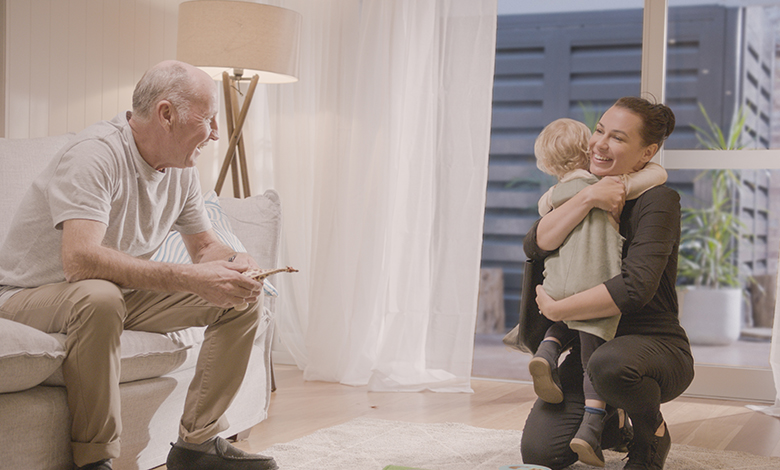- Secure attachment is deeper than a simple emotional bond
- Attachment parenting is not the same as secure attachment
- Interpreting your child’s non-verbal cues helps form a secure attachment
Secure attachment and how you can foster it with your child

Key points
Secure attachment is one type of attachment pattern between a child and a parent. In the 1930s, psychiatrist and psychoanalyst John Bowlby shared a pioneering theory that children need to form a secure attachment with at least one primary caregiver (although often children form attachments with both parents) to develop socially and emotionally. Secure attachments form a stable ‘base’ from which your child can venture into the wider world and gain independence. While secure attachment is the ideal relationship pattern between parent and child, it’s not the only one that can form as a result of parental actions.
The 4 types of attachment
According to attachment theory, there are 4 key types of attachment. These types are formed by categorising the quality of caregiving alongside an infants’ strategy to deal with distress.
Secure attachment
Secure attachment is when a caregiver responds to an infant’s distress in a loving manner. For example, if your little one is crying, you might pick them up and reassure them. This style of attachment teaches your child to feel secure in expressing negative emotions because they know you’re at hand to comfort them.
Insecure-avoidant attachment
Insecure-avoidant attachment occurs when a caregiver responds to an infant’s distress by rejecting it – often in the form of anger, or by ignoring it. Such responses condition the child to minimise negative expressions of emotion in the presence of their caregiver.
Insecure-resistant attachment
Insecure-resistant attachment happens when a caregiver responds to an infant’s distress in an unpredictable or inconsistent manner. This may manifest in the caregiver being overwhelmed by their child’s reactions and inadvertently amplifying the child’s discomfort.
Insecure-disorganised attachment
Finally, atypical behaviours by caregivers, like being frightened or frightening the child when the child seeks protection or reassurance, can result in an infant forming an insecure-disorganised attachment. Signs of this attachment style can include showing fear towards the caregiver, actively turning away from the caregiver, avoiding eye contact, screaming or making noises monotonously, and abruptly disrupting careseeking (like going in for a cuddle then suddenly changing behaviour).
How do I foster secure attachment with my child?
A secure attachment means that you’re on-hand to help your little one when they’re upset or stressed. This reassures your child that when things are tough for them, they’ll have a reliable figure to help them through the situation. Research has indicated that even at this young age, the way you respond to these challenges can help to shape your child’s self-confidence, resilience and ability to form social relationships in later life.
Interpreting your child’s pre-language cues goes a long way to forming a secure attachment. Pay attention to the way your little one is communicating non-verbally via eye contact and gestures. Talk to your baby in a soothing voice and encourage skin-to-skin touch – you could also try baby massage. For toddlers, it can be even more challenging, but it’s important for the caregiver to maintain their role as stable, committed and supportive. Extensive research shows that a child’s security in their relationship actually helps them grow autonomy.
Finally, strive to be present in the moment when parenting and be realistic in the expectations you place on both your child and yourself. Try not to worry too much about the details. Know that if you are providing love, nourishment and comfort for your child, a positive attachment has every chance of developing.
Related pages

Get in touch with our Careline experts
When your little one is unhappy or unwell you want reliable support from a trusted source. Our Careline team of nutritionists, dietitians and midwives specialise in infant and child health, offering free nutrition, feeding and product information.
Every feeding journey is unique
Not every parent can produce breast milk. No matter what choice you make, we will support your unique feeding journey.
We at Nutricia believe in providing the best nutrition for babies, which is why we recognise breast milk is uniquely superior for babies as it provides many benefits. It is important that mums have a healthy diet to support breastfeeding. A decision not to breastfeed, or partial bottle feed, may reduce breast milk supply making it difficult to reverse. The cost and social implications of using feeding methods should be considered. Always seek professional advice about feeding your baby. Ensure formula is used as directed as improper use can affect baby’s health.
REMEMBER: The information on this page is general only. If you have any concerns about your baby’s poo or questions about constipation or any other health concerns, please speak to a healthcare professional, like a Pharmacist, GP or Maternal Child Health Nurse.



